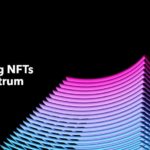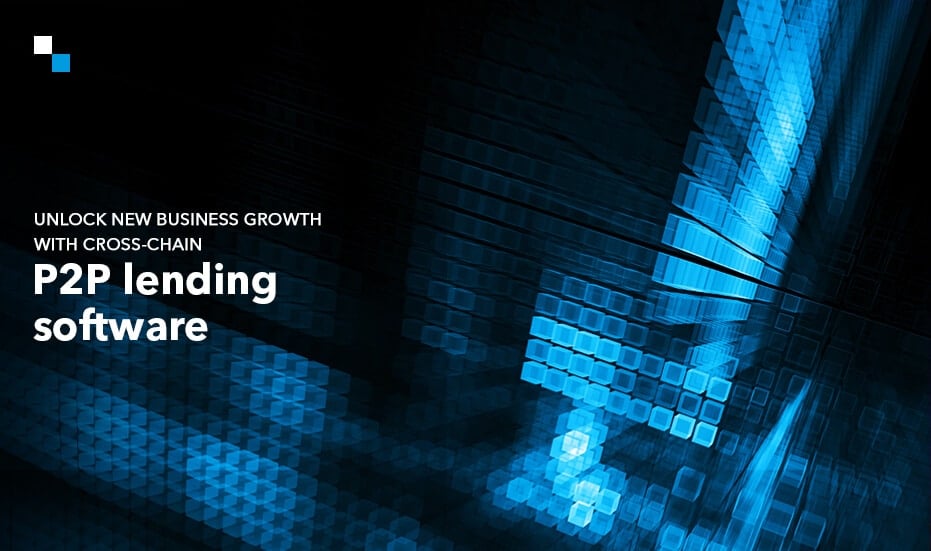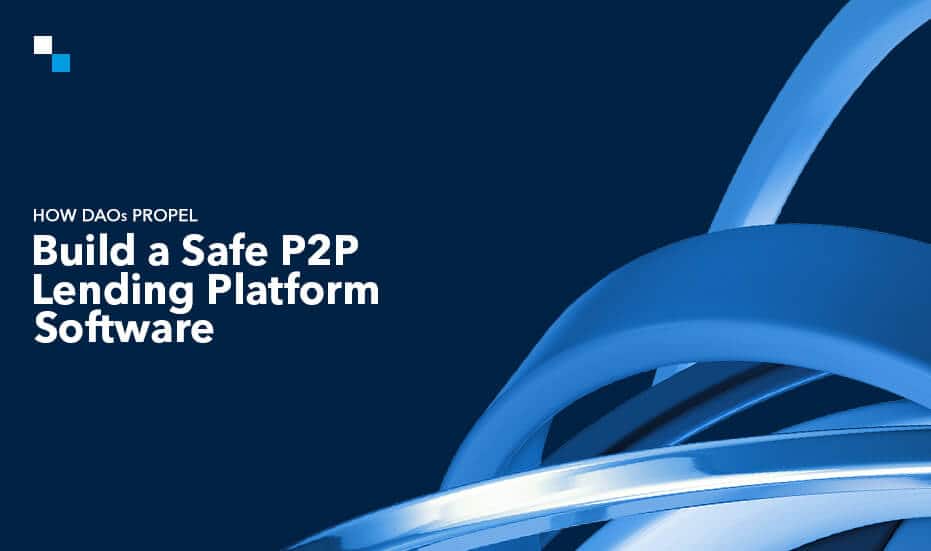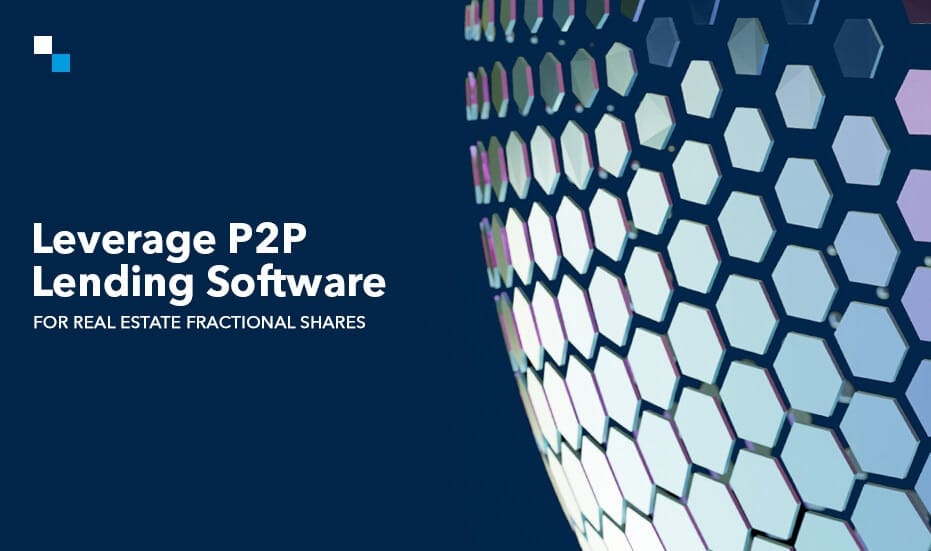
How to Create NFT Token on Arbitrum
May 14, 2024
Blockchain Identity Management- Your Essential FAQs Answered
May 15, 2024Due to stringent requirements and lengthy approval processes, traditional loans can feel out of reach for many. However, a modern solution – a P2P lending platform, can change the game. It directly links you with a community of ordinary investors eager to support your financial requirements.
However, in an increasingly competitive market, P2P lending platforms must continually enhance their efficiency and scalability to remain viable. This blog delves into the inner workings of P2P lending, explores the transformative potential of Layer 2 blockchains, and equips you with the knowledge to navigate this exciting financial frontier.
Let’s start with exploring the basics:-
What is P2P Lending Platform?
P2P lending has become a game-changer for borrowers struggling with strict credit checks and lengthy applications. These platforms connect directly with investors, offering a faster and more accessible path to funding.
Convenience is undeniable for borrowers and investors. They can complete transactions online from the comfort of their places. P2P loans offer a faster application process compared to traditional lenders.
Let’s take the overview of the inner workings of P2P lending to grasp how it operates.
How P2P Lending Platform Works?
Let’s understand with 5 simple steps:-
- Choose a Platform:- Research and register on a P2P lending platform software that suits your needs.
- Borrowers Apply:- Provide details like income, credit history, and desired loan amount. A good credit score can lead to lower interest rates.
- Loan Listing & Approval:- The platform assesses your application and creates a loan listing for lenders to review and decide on funding.
- Funding & Receiving Loan:- Once approved, lenders can choose to fund your entire loan or contribute portions. You’ll receive the money through the platform.
- Repayment & Management:- Repay the loan through the platform, which automatically distributes it to lenders if there are multiple.
Overall, the P2P lending platform offers a valuable alternative to traditional financing. However, as P2P platforms grow, they face challenges in maintaining efficiency and scalability.Fortunately, Layer 2 blockchain technology has emerged as a potential solution to address these challenges. Layer 2 blockchains act like secondary networks that can handle transactions faster and cheaper than the main blockchain, enabling P2P lending platforms to scale efficiently.
How Layer 2 Blockchains Transform the Efficiency and Scalability of P2P Lending Platforms?
Here is the list of 5 top Layer 2 blockchains that can boost the efficiency and scalability of P2P lending platforms:
1. Optimism:-
- This Ethereum-based Layer 2 uses Optimistic Rollups, a scaling technique that bundles transactions off-chain and validates them periodically on the mainnet.
- This allows for faster and cheaper transactions while inheriting the security of Ethereum. Optimism’s focus on developer experience and EVM compatibility makes it easy to build and deploy P2P lending software on its platform.
2. Arbitrum:-
- Similar to Optimism, Arbitrum utilizes Optimistic Rollups for scaling. It offers high transaction throughput and low fees, making it suitable for P2P lending platforms seeking to handle a large volume of loan applications.
- Additionally, Arbitrum boasts a robust developer ecosystem and growing support for DeFi protocols, further enhancing its suitability for building P2P lending software.

3. Polygon:-
- MATIC is a sidechain network connected to Ethereum, offering faster transaction speeds and lower fees.
- It utilizes various scaling solutions, including the PoS consensus mechanism, to achieve high throughput. A P2P lending platform built on Polygon can benefit from its scalability, allowing for a higher volume of loan applications and faster processing.
4. Immutable X:
- This Layer 2 focuses on scaling NFTs but holds immense potential for a P2P lending platform. Immutable X utilizes zk-STARKs, a form of zero-knowledge proofs, to achieve near-instantaneous transactions with minimal fees.
- This allows for efficient management of loan agreements and collateralized assets within the P2P lending platform.
5. Loopring:-
- Utilizing ZK Rollups, Loopring offers fast, secure, and low-cost transactions. This Layer 2 solution can be beneficial for P2P lending platforms seeking to improve user experience by enabling faster loan applications, settlements, and interest accruals.
- Additionally, Loopring’s built-in order book functionality can be adapted for creating efficient peer-to-peer lending marketplaces.
These Layer 2 blockchains offer distinct advantages for P2P lending platforms. Developers can create a scalable and efficient platform that fosters growth and user adoption in the P2P lending space by choosing the right blockchain solution based on specific needs.
How to Create a Scalable P2P Lending Platform?
Here’s a quick roadmap to guide you through the key considerations for creating a scalable solution that empowers borrowers and lenders alike.
- Target Audience & Regulations- Research your niche, competitors, and regulations to create a compliant platform.
- Industry Leaders: Look for established financial institutions or renowned fintech companies in the P2P lending space.
- Strategic Investors: Consider seeking investment from well-respected venture capital firms or angel investors with experience in the financial technology sector.
- Modular Design: Design your platform with modular components that can be easily scaled up or down based on user growth.
- Seamless User Experience- Design an intuitive interface with easy registration, profiles, loan applications, and payments.
- Beta Testing and Refinement- Conduct thorough testing with a limited user base to identify and address any issues before the full launch.
- Customer Support: Establish a responsive and reliable customer support system to address user concerns and maintain a positive user experience.
Building a successful P2P lending platform hinges on balancing borrower needs, lender security, and a user-friendly experience.
You can create a platform that empowers users and thrives in the long run by focusing on scalability through automation and transparency. Consider exploring: Step By Step Process to Develop a P2P Lending Platform to learn more about building a P2P lending platform software.
Global Financial Landscape of P2P Lending Platform
The global financial landscape is witnessing a potential paradigm shift with the rise of P2P lending platforms. According to Future Market Insights, the market’s value is anticipated to hit US$ 517.2 billion by 2024.
Consequently, the market is projected to experience a CAGR of 12.70% over the next decade, reaching a staggering US$ 1,709.6 billion by 2034. While P2P lending is still evolving, its disruptive potential suggests it could become a major force in reshaping the global financial system.
The Final Words
P2P lending platforms offer a faster and more accessible alternative to traditional loans. However, to remain competitive, they need to be efficient and scalable. Layer 2 blockchains can address this challenge by enabling faster and cheaper transactions.
Consider partnering with a leading fintech provider, Antier, a renowned firm in creating P2P lending software and Layer 2 integration. Connect today!



